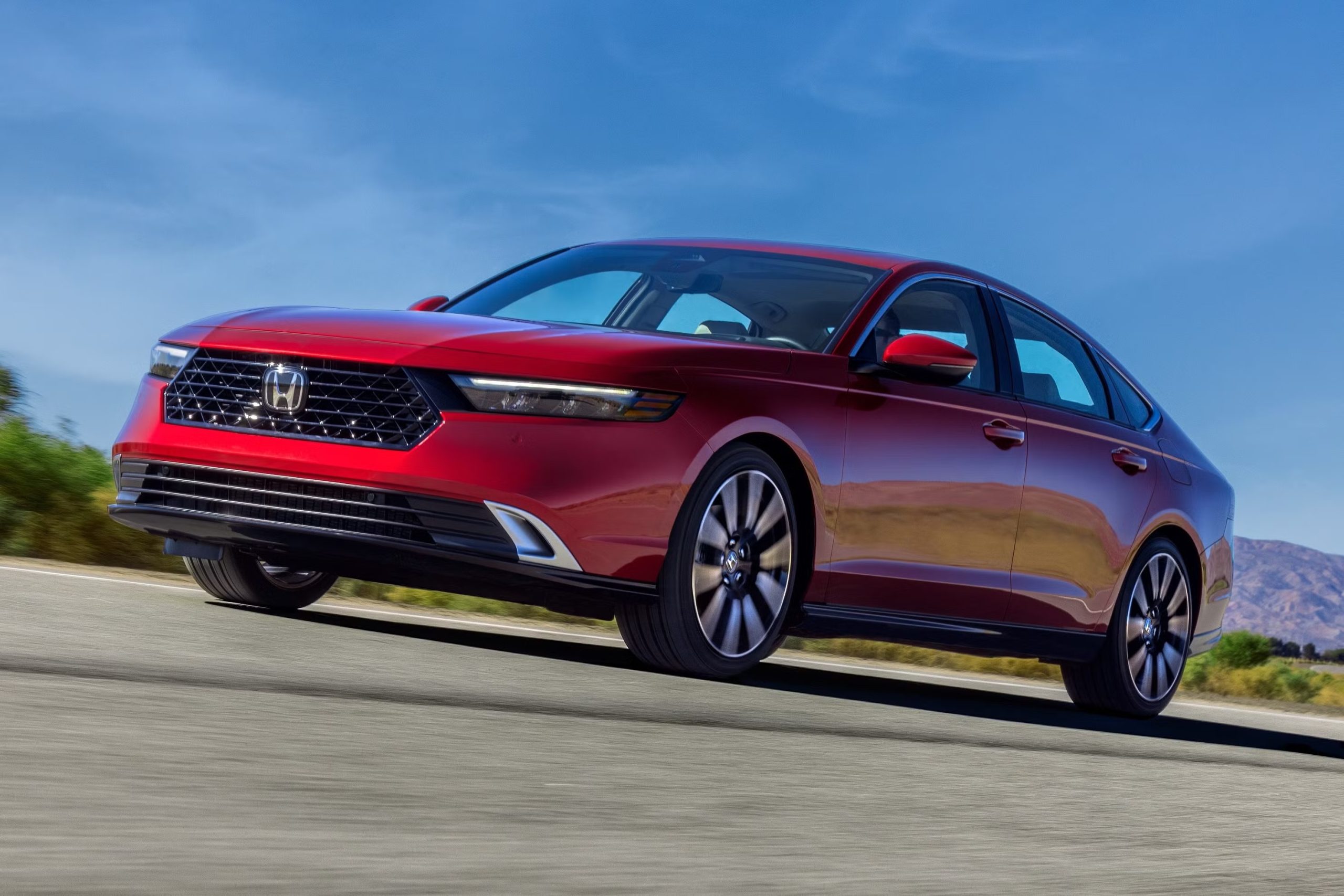Hybrid vehicles have become a cornerstone of modern automotive innovation, offering an enticing blend of fuel efficiency, reduced emissions, and the promise of long-term savings on gas.
Honda, as one of the pioneering manufacturers in hybrid technology, has been at the forefront of this movement, producing a range of hybrid models that appeal to a broad spectrum of drivers.
From compact sedans like the Insight to practical SUVs such as the CR-V Hybrid, Honda’s hybrid lineup has often been praised for its reliability, efficiency, and well-engineered powertrains.
However, as with any technology that blends electric and gasoline power, not all hybrids are created equal. While some Honda hybrids have earned a stellar reputation for their trouble-free operation and durability, others have been dogged by persistent issues that undermine their long-term ownership experience.
Understanding which Honda hybrids stand the test of time and which ones fall short is critical for buyers who want to avoid unexpected repair costs and reliability headaches. The success or failure of a hybrid vehicle often hinges on the robustness of its battery system, the sophistication of its hybrid control electronics, and the durability of its mechanical components.
Honda’s approach to hybrid technology has evolved significantly over the years, moving from simpler Integrated Motor Assist (IMA) systems to more advanced two-motor hybrids with sophisticated battery management and thermal controls.
These advances have improved reliability but have also introduced new complexities that can sometimes result in hidden flaws or early component failures.
In this article, we delve into five Honda hybrids that have proven to be exceptionally trouble-free, delivering years of dependable service and low maintenance costs.
These models exemplify Honda’s strengths in engineering hybrids that are durable, efficient, and cost-effective to maintain. Conversely, we also examine five Honda hybrids that have faced reliability challenges, from early battery failures to transmission and electronic system glitches.
These models highlight the potential pitfalls buyers should be aware of, particularly when purchasing older or early-generation hybrids.
By comparing these two groups, prospective buyers and enthusiasts can better understand the nuances of Honda’s hybrid technology and make more informed decisions when shopping for a hybrid vehicle.
Whether you’re considering a hybrid for your daily commute, family transportation, or simply want a greener vehicle, knowing which Honda hybrids are trouble-free and which ones come with caveats can save you time, money, and frustration.
The goal is to provide a balanced view grounded in real-world owner experiences and technical insight, shedding light on what makes certain hybrids stand out as reliable companions and why others struggle to live up to expectations. In doing so, we aim to empower readers with knowledge that goes beyond marketing claims and helps navigate the complex landscape of hybrid ownership.
Also Read: 5 Cars That Keep Working in Texas Heat and 5 That Overheat Instantly
5 Honda Hybrids That Are Trouble-Free

1. Honda Insight (Second Generation, 2010-2014)
The second-generation Honda Insight is a shining example of Honda’s ability to produce a hybrid vehicle that balances simplicity, efficiency, and long-term reliability. Unlike many hybrids of its time, the Insight’s Integrated Motor Assist (IMA) system doesn’t attempt to be overly complex.
It pairs a modest 1.3-liter gasoline engine with an electric motor that provides supplementary power and regenerative braking. This approach, while less sophisticated than full parallel hybrids, keeps the system straightforward and durable. As a result, owners often report very few issues with the hybrid system, even after driving well beyond 150,000 miles.
The air-cooled battery pack design plays a crucial role here, preventing the overheating problems that can degrade batteries prematurely. Because the battery is designed to run cooler, it ages more gracefully, avoiding many of the common problems that plague hybrids with liquid-cooled packs.
Beyond the hybrid system, the Insight is mechanically simple in ways that work to its advantage. Its lightweight construction reduces stress on suspension, brakes, and tires, leading to fewer repairs and better fuel economy over time. The small, naturally aspirated engine has a reputation for solid reliability, benefiting from Honda’s decades of experience in small four-cylinder powerplants.
Maintenance costs remain manageable, with basic oil changes, brake servicing, and occasional hybrid system checks being the primary routine tasks. Parts availability and aftermarket support are excellent, which further boosts the Insight’s status as a dependable vehicle for long-term ownership.
In terms of driving experience, the Insight offers a smooth and quiet ride, which many owners appreciate for their daily commutes. It’s not a performance vehicle, but it’s not designed to be one—this deliberate focus on practicality and longevity means that it avoids the pitfalls of overly complicated or fragile hybrid systems.
The interior, while modest, is durable and user-friendly, with controls that stand up well to the test of time. Altogether, the second-gen Insight represents one of the most trouble-free Honda hybrids on the market, providing a blueprint for how simplicity and smart engineering can lead to reliability and longevity.
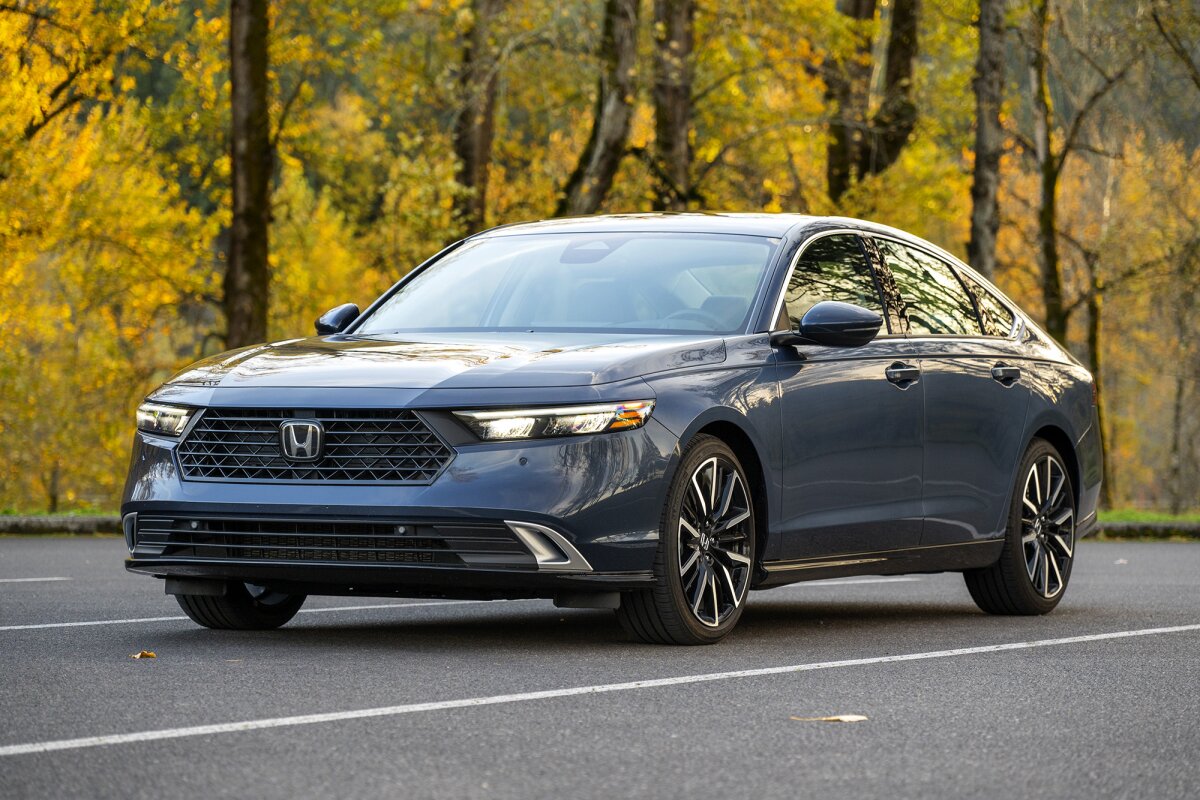
2. Honda Accord Hybrid (2014-Present)
The Honda Accord Hybrid is widely regarded as the gold standard for midsize hybrid sedans, combining efficiency, comfort, and reliability in a way few competitors match. Since its 2014 introduction, the Accord Hybrid has used an advanced two-motor hybrid system that intelligently balances power delivery between its gasoline engine and electric motors.
This system is more complex than the earlier IMA setups but benefits from Honda’s mature engineering and careful integration. Unlike some hybrids that suffer from early battery degradation, the Accord Hybrid’s lithium-ion battery pack is liquid-cooled and benefits from a sophisticated thermal management system.
This greatly extends battery life and minimizes the risk of unexpected failures. The reliability of the hybrid components is matched by the proven longevity of the 2.0-liter four-cylinder engine, which is derived from Honda’s well-established lineup of efficient and durable engines.
What truly sets the Accord Hybrid apart is its exceptional build quality and refinement. Owners consistently praise the smoothness of the powertrain’s transitions between gas and electric modes, which not only improves fuel efficiency but also reduces wear on drivetrain components.
The hybrid system is designed to minimize stress on the gasoline engine by using electric assist strategically, which helps extend engine life. Additionally, the Accord’s suspension is tuned for comfort, absorbing road imperfections and reducing chassis wear, which translates to fewer repairs and better long-term durability. Routine maintenance tasks such as oil changes, brake pad replacements, and battery system checks are straightforward and relatively inexpensive, especially when compared to luxury hybrid models.
Inside, the Accord Hybrid provides a spacious and comfortable environment that ages well. High-quality materials and thoughtful ergonomics mean the cabin doesn’t show premature wear even after years of use. The infotainment and electrical systems are generally stable and free of the glitches that plague some competitors, further enhancing the trouble-free experience.
These factors combined make the Accord Hybrid a preferred choice for buyers seeking a dependable, efficient hybrid sedan capable of delivering many years of low-maintenance ownership with minimal headaches.
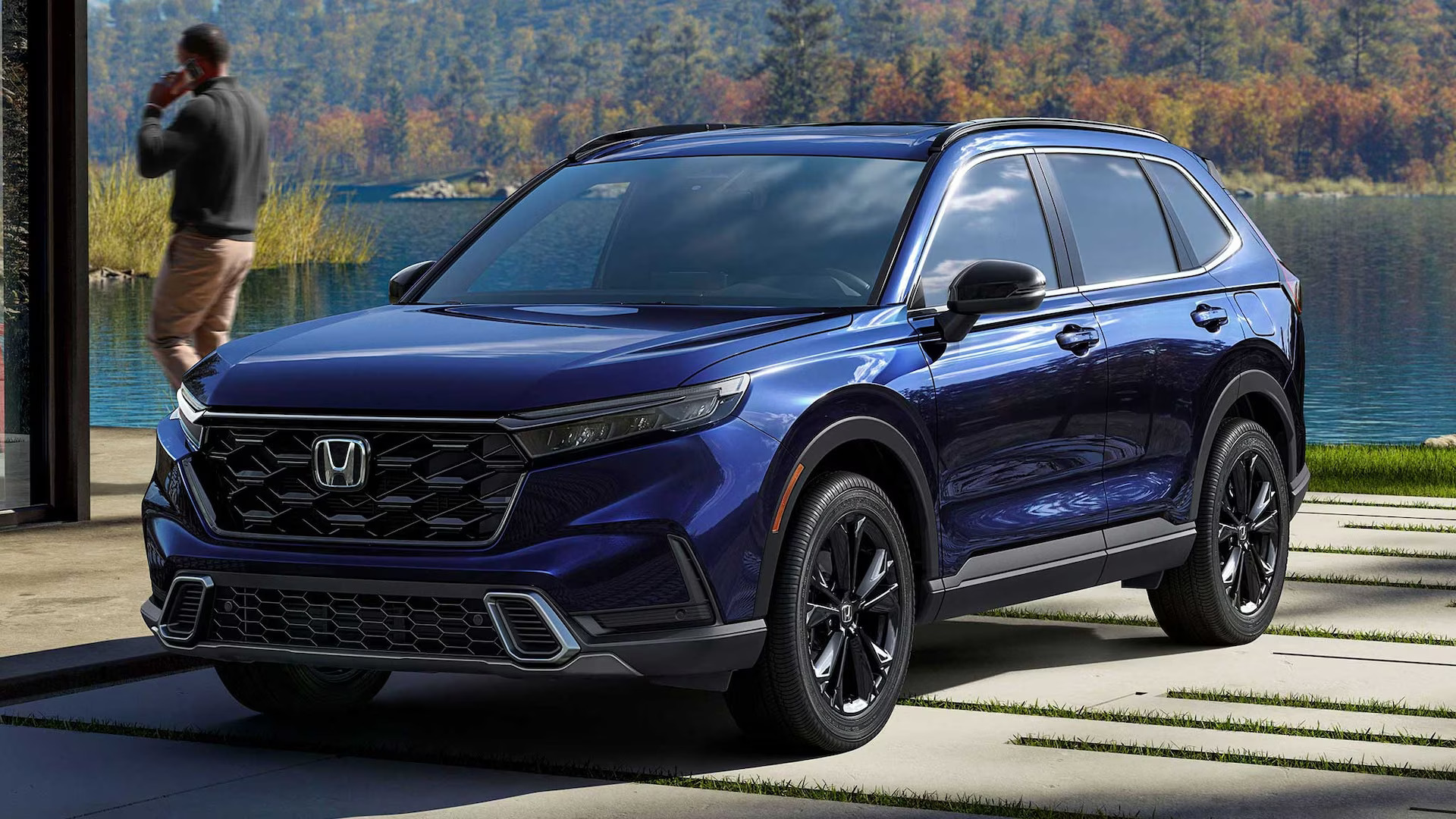
3. Honda CR-V Hybrid (2019-Present)
The introduction of the CR-V Hybrid marked a significant milestone for Honda, bringing the benefits of hybrid technology into the immensely popular compact SUV segment.
Unlike smaller hybrid sedans, the CR-V Hybrid’s larger size and heavier weight demanded a more powerful and durable hybrid system, which Honda delivered through a sophisticated two-motor system combined with a turbocharged 2.0-liter gasoline engine.
This system provides smooth and reliable power delivery while maintaining impressive fuel economy numbers. One of the standout features contributing to the CR-V Hybrid’s reputation for trouble-free operation is its advanced battery cooling system.
Unlike earlier Honda hybrids that used air cooling, the CR-V Hybrid employs liquid cooling for its lithium-ion battery pack, ensuring optimal operating temperatures and vastly improving battery longevity under heavy usage and in hot climates.
Owners appreciate the CR-V Hybrid not just for its fuel efficiency, but also for its durable construction and ease of maintenance. Suspension components and chassis parts have been strengthened to cope with the extra weight of the hybrid system, reducing premature wear.
Honda’s long-standing commitment to quality control means that many components share parts with the conventional CR-V, a model renowned for its reliability.
This parts commonality helps keep maintenance costs down and simplifies repairs. The vehicle also benefits from Honda’s robust dealer network and wide availability of replacement parts, which adds another layer of confidence for long-term owners.
Furthermore, the CR-V Hybrid delivers a comfortable, composed ride, even on rough roads, which speaks to the quality of its suspension tuning and chassis engineering.
Unlike some hybrid SUVs that compromise ride quality for fuel savings, the CR-V Hybrid strikes an excellent balance, ensuring the vehicle remains comfortable for everyday driving while capable of handling the extra stresses of its hybrid hardware.
The CR-V Hybrid exemplifies Honda’s ability to scale their hybrid technology into the SUV market without sacrificing the brand’s hallmark reliability and owner satisfaction.
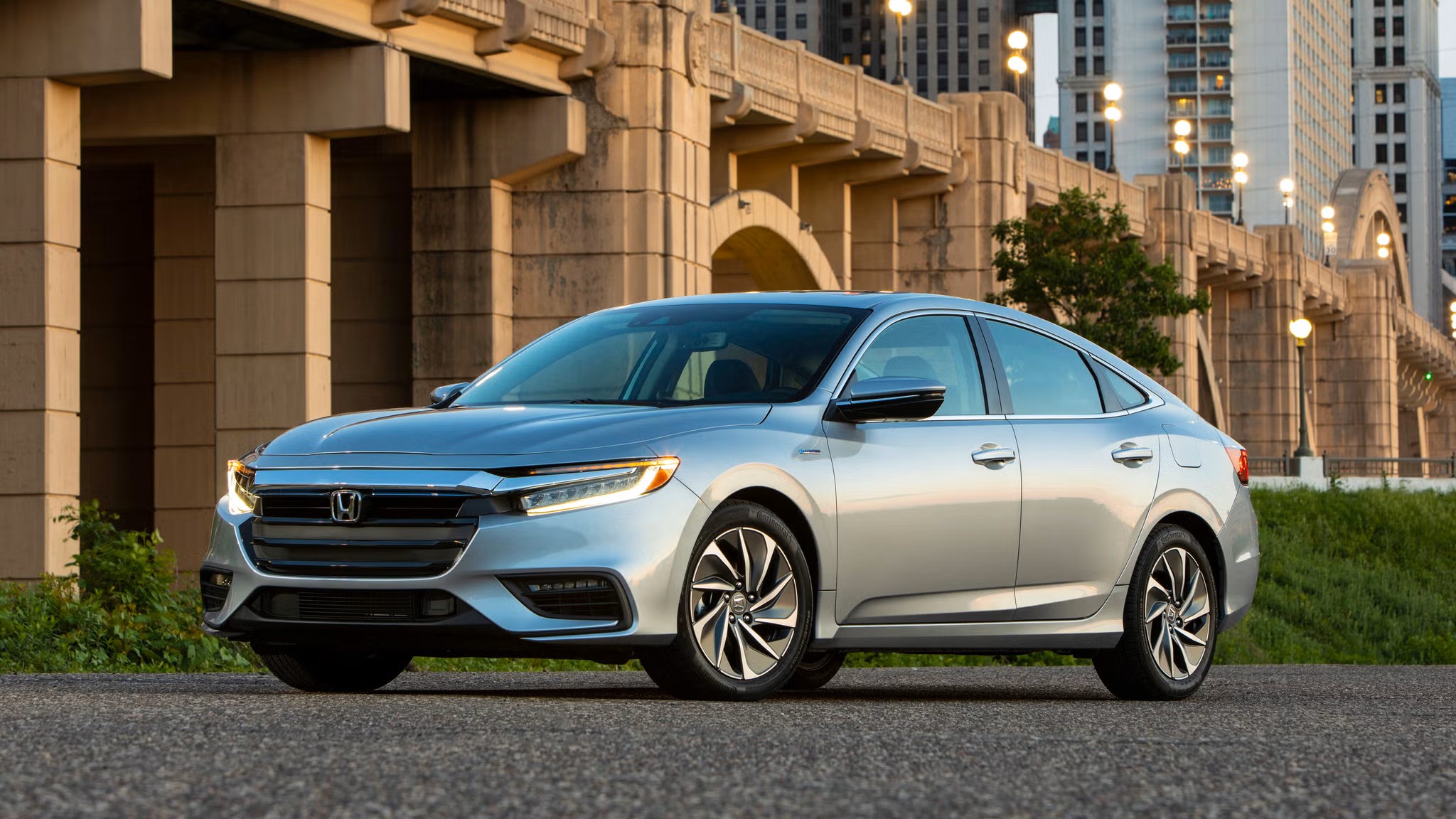
4. Honda Insight (Third Generation, 2019-Present)
The third-generation Honda Insight, introduced in 2019, revitalized the model name with a fresh design and significantly improved hybrid technology. Borrowing heavily from the acclaimed Accord Hybrid powertrain, the Insight’s two-motor hybrid system and lithium-ion battery pack are engineered for longevity and dependability.
Unlike many hybrids that use complex, failure-prone components, the Insight employs a streamlined and thoroughly tested system that minimizes the risk of breakdowns.
The battery benefits from liquid cooling and advanced software controls that carefully manage charging and discharging cycles to extend life span. Real-world owners have reported remarkably few problems even after years of daily use, highlighting Honda’s continued refinement of hybrid technology.
Mechanically, the Insight combines efficiency with reliability in a compact sedan package that is surprisingly comfortable and quiet. The chassis is well-engineered to reduce vibration and noise, which not only improves driving enjoyment but also decreases the wear on suspension and interior components over time.
The 1.5-liter engine that partners with the electric motors is a proven design, known for robust performance and minimal maintenance requirements. Combined with Honda’s extensive quality control, the Insight maintains its reputation for trouble-free ownership.
Additionally, the Insight’s interior materials and build quality are excellent for its class. Honda’s attention to detail ensures that switches, panels, and upholstery withstand the rigors of everyday use without premature wear or failure. The infotainment and electrical systems are stable and user-friendly, reducing the likelihood of annoying glitches or costly repairs.
Taken together, these qualities make the third-generation Insight a standout in Honda’s hybrid lineup, offering a reliable and satisfying ownership experience to drivers looking for a compact, efficient hybrid.

5. Honda Clarity Plug-in Hybrid (2018-2021)
The Honda Clarity Plug-in Hybrid represents Honda’s leap into electrified vehicles with an emphasis on practicality and reliability. Despite the added complexity of its plug-in hybrid architecture, the Clarity PHEV has demonstrated remarkable dependability since its debut.
Its hybrid powertrain, which pairs a 1.5-liter gasoline engine with an electric motor and a sizeable lithium-ion battery pack, offers an electric-only range that covers most daily commutes, reducing fuel consumption and wear on the gasoline engine.
Honda’s meticulous engineering includes a robust battery management system that protects the battery from overcharging and excessive heat, two common causes of hybrid battery failure.
Owners praise the Clarity for its smooth power delivery and quiet operation, both of which contribute to reduced mechanical stress over time. Unlike some plug-in hybrids that suffer from complex, failure-prone electrical systems, the Clarity’s relatively simple yet effective design has minimized common hybrid problems.
Battery degradation rates are low compared to many plug-in hybrids, thanks to effective thermal management and Honda’s careful battery chemistry choices. The vehicle’s regenerative braking system also contributes to brake longevity by reducing wear, which helps lower maintenance costs.
Moreover, the Clarity’s interior and build quality are tailored for long-term durability. High-quality materials, combined with solid assembly standards, ensure that wear and tear from daily use are minimal. The relatively quiet cabin and ergonomic design contribute to a comfortable ownership experience.
While plug-in hybrids often raise concerns about complexity and maintenance costs, the Clarity PHEV stands out as a dependable choice that balances advanced technology with Honda’s core values of reliability and user-friendly engineering.
5 Honda Hybrids That Aren’t Trouble-Free
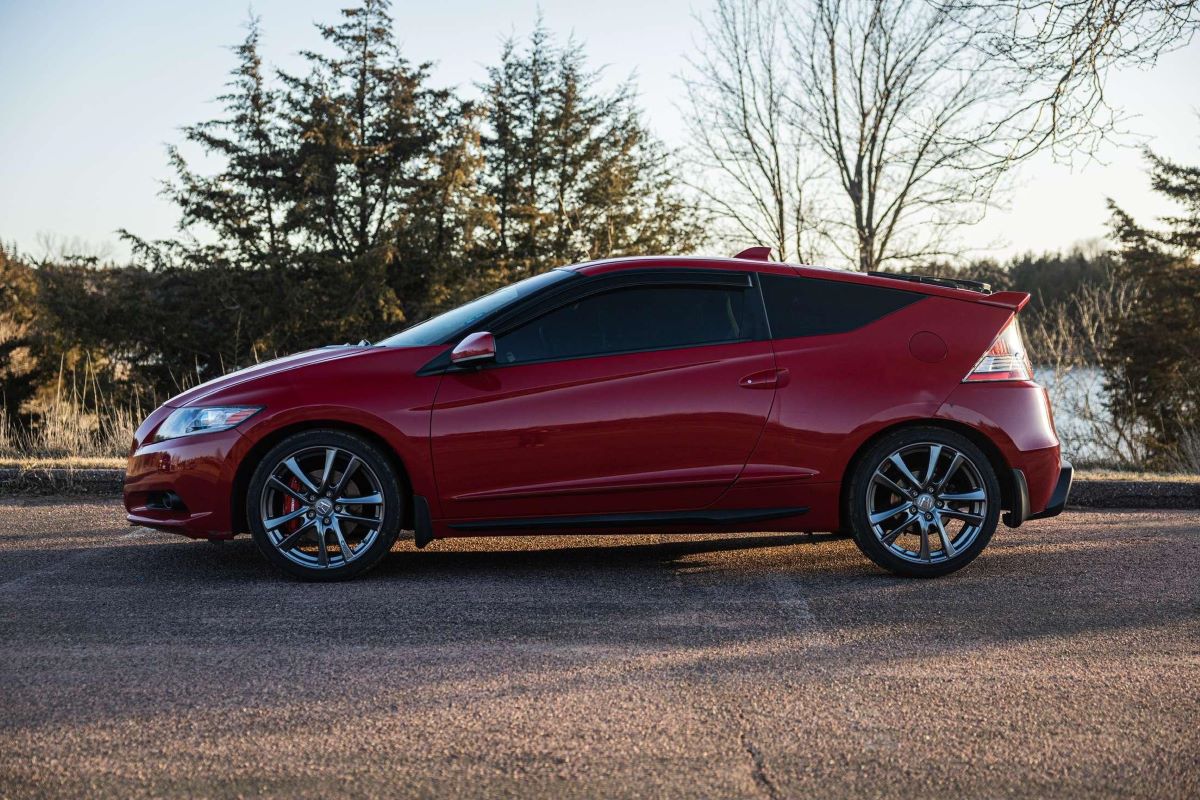
1. Honda CR-Z (2010-2016)
The Honda CR-Z was introduced as a sporty hybrid coupe aimed at blending fun driving dynamics with hybrid efficiency. While it had a loyal fan base, the CR-Z unfortunately gained a reputation for certain persistent issues that impacted reliability and long-term ownership satisfaction.
One of the most significant problems owners faced was related to the Integrated Motor Assist (IMA) system, which in the CR-Z is a small electric motor supplementing the 1.5-liter gasoline engine.
Unlike more advanced hybrid systems, the IMA in the CR-Z was prone to premature battery degradation, partly due to the relatively small and less robust nickel-metal hydride battery pack, which was sensitive to heat and heavy cycling during spirited driving. As a result, many owners experienced reduced electric assist over time, leading to decreased fuel economy and, in some cases, costly battery replacements.
The CR-Z’s mechanical components also showed signs of wear that were less common in other Honda models. Its sport-tuned suspension and chassis were sometimes criticized for being too stiff and unforgiving on rough roads, which not only affected comfort but could accelerate wear on suspension bushings, shocks, and related components.
Additionally, some owners reported issues with the continuously variable transmission (CVT), such as shuddering or hesitation during acceleration, which could necessitate expensive repairs or replacements. Although the CVT itself was a staple in many Honda hybrids, the tuning in the CR-Z sometimes magnified its weaknesses in a sportier driving context.
Moreover, the CR-Z’s interior and electrical systems were not immune to troubles. Several owners noted early failures in the infotainment screen and glitches with the car’s navigation system. Given the car’s niche status and relatively low production numbers compared to other Hondas, some replacement parts were less readily available, potentially increasing maintenance costs and downtime.
Collectively, these issues detracted from the CR-Z’s promise of combining sportiness with hybrid efficiency, making it a hybrid that, while appealing in concept, didn’t always live up to Honda’s usual standards for trouble-free ownership.

2. Honda Civic Hybrid (First Generation, 2003-2005)
The first-generation Honda Civic Hybrid was a groundbreaking vehicle when it launched, bringing hybrid technology to the popular Civic platform. However, despite its initial acclaim, this early hybrid model struggled with reliability problems that have tarnished its reputation over the years.
One of the biggest challenges was the IMA battery system, which suffered from premature degradation and failure, especially in warmer climates or with aggressive driving habits. Battery replacement for the Civic Hybrid’s nickel-metal hydride pack was expensive and sometimes difficult to source, forcing some owners to turn to aftermarket or rebuilt options that didn’t always perform reliably.
Beyond the battery, the first-gen Civic Hybrid exhibited issues with its hybrid control system’s electronics, which could lead to warning lights, reduced fuel efficiency, and occasional power loss. These faults often required specialized diagnostics and repair, which increased ownership costs compared to conventional Civics.
Additionally, some drivers experienced problems with the car’s CVT, which, though innovative for its time, wasn’t as refined as later versions. CVT issues included belt slipping and unusual noises, symptoms that could result in costly repairs if not addressed promptly.
Furthermore, the Civic Hybrid’s fuel economy sometimes fell short of expectations, especially in colder weather or stop-and-go traffic, due in part to the battery and hybrid system struggling to maintain efficiency.
The interior and build quality, while generally solid, sometimes showed premature wear on seats and trim pieces due to less durable materials used to save weight. These factors combined to make the first-generation Civic Hybrid less trouble-free than many expected, causing some owners to question whether the cost savings at the pump justified the increased maintenance risks and expenses.
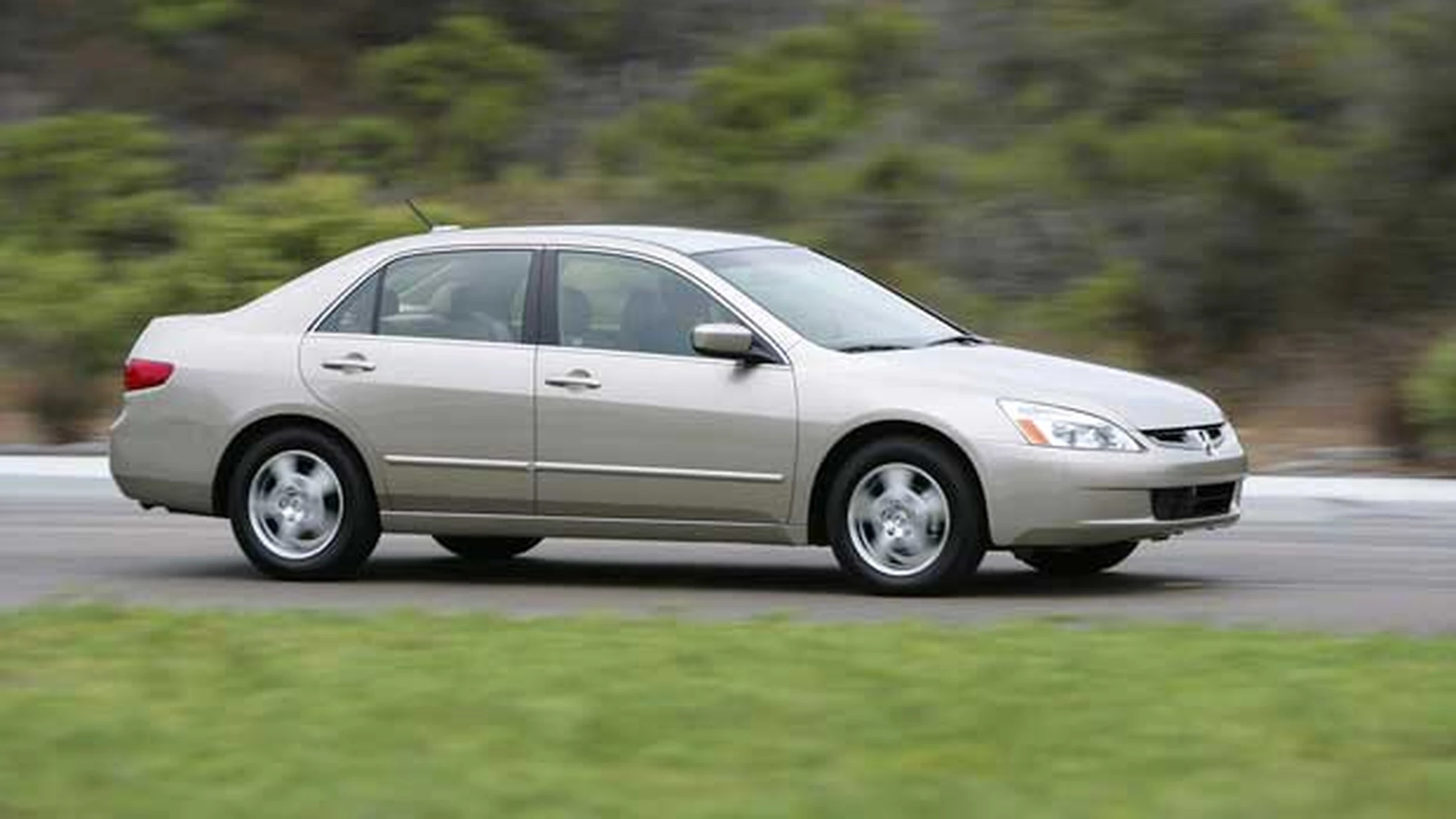
3. Honda Accord Hybrid (First Generation, 2005-2007)
The first-generation Honda Accord Hybrid, launched in the mid-2000s, was one of the early attempts by Honda to integrate hybrid technology into a larger sedan. While it featured a sophisticated Integrated Motor Assist system and promised fuel efficiency, it was not without notable reliability concerns.
The hybrid battery pack was a common weak point, with many owners reporting gradual capacity loss after just a few years of use. This degradation led to diminished hybrid assistance and compromised fuel economy, issues compounded by the high cost of battery replacement.
Given the relatively complex nature of the hybrid system for its time, repairs often required specialized service centers, adding to ownership costs. Another problematic aspect of this Accord Hybrid was the drivetrain.
The car was equipped with a V6 gasoline engine paired with the IMA system, which created unique stresses on the transmission and motor. Some owners experienced transmission issues such as slipping or harsh shifting, problems not typically seen in the non-hybrid Accord models.
These issues could lead to expensive repairs or premature transmission replacements. The added weight and complexity of the hybrid components also put extra strain on suspension and braking systems, accelerating wear and requiring more frequent maintenance.
Interior and electronic reliability were other weak points. Early infotainment systems in this model sometimes suffered from software glitches, touchscreen unresponsiveness, and failures of integrated systems such as navigation and climate control.
Additionally, the higher complexity of the hybrid powertrain meant that warning lights and diagnostic alerts were not uncommon, potentially causing anxiety for owners unfamiliar with hybrid technology. Altogether, while the first-generation Accord Hybrid was pioneering in many ways, it did not escape the teething problems associated with early hybrid adoption, leading to a reputation for being less trouble-free than later models.

4. Honda CR-V Hybrid (Early Models, 2020-2021)
While the Honda CR-V Hybrid has generally gained a positive reputation since its debut, the earliest models from the 2020 and 2021 model years exhibited a series of issues that impacted owner satisfaction and reliability perceptions. One of the primary complaints centered on the hybrid battery and associated electronics.
Some owners reported premature battery capacity loss and occasional failures of the battery management system, leading to warnings and degraded fuel economy.
These problems often required dealer intervention and, in some cases, costly repairs or battery replacements under warranty. Although Honda has since improved these systems, the early CR-V Hybrids faced challenges that clouded their reliability image.
In addition to battery issues, the early CR-V Hybrid models had software bugs in the hybrid control module that caused unpredictable engine stalling or hesitation during acceleration. Such glitches not only diminished driving confidence but also raised safety concerns.
These problems necessitated multiple software updates from dealers and some hardware replacements, creating inconvenience for owners and slightly increasing the total cost of ownership.
Furthermore, the increased weight and complexity of the hybrid system in the CR-V platform caused some premature wear on suspension components and brakes, especially in regions with rough roads or aggressive driving conditions.
Interior and infotainment issues were also reported. Some early CR-V Hybrid owners experienced touchscreen freezes, Bluetooth connectivity problems, and occasional failures of voice commands and navigation. While these issues might seem minor compared to powertrain troubles, they impact daily usability and satisfaction.
Honda’s dealer network has been responsive in addressing these problems, but the initial flurry of issues undermined the vehicle’s otherwise strong appeal. Buyers interested in this model should be cautious about early production years and consider purchasing newer or well-maintained used versions where these flaws have been addressed.
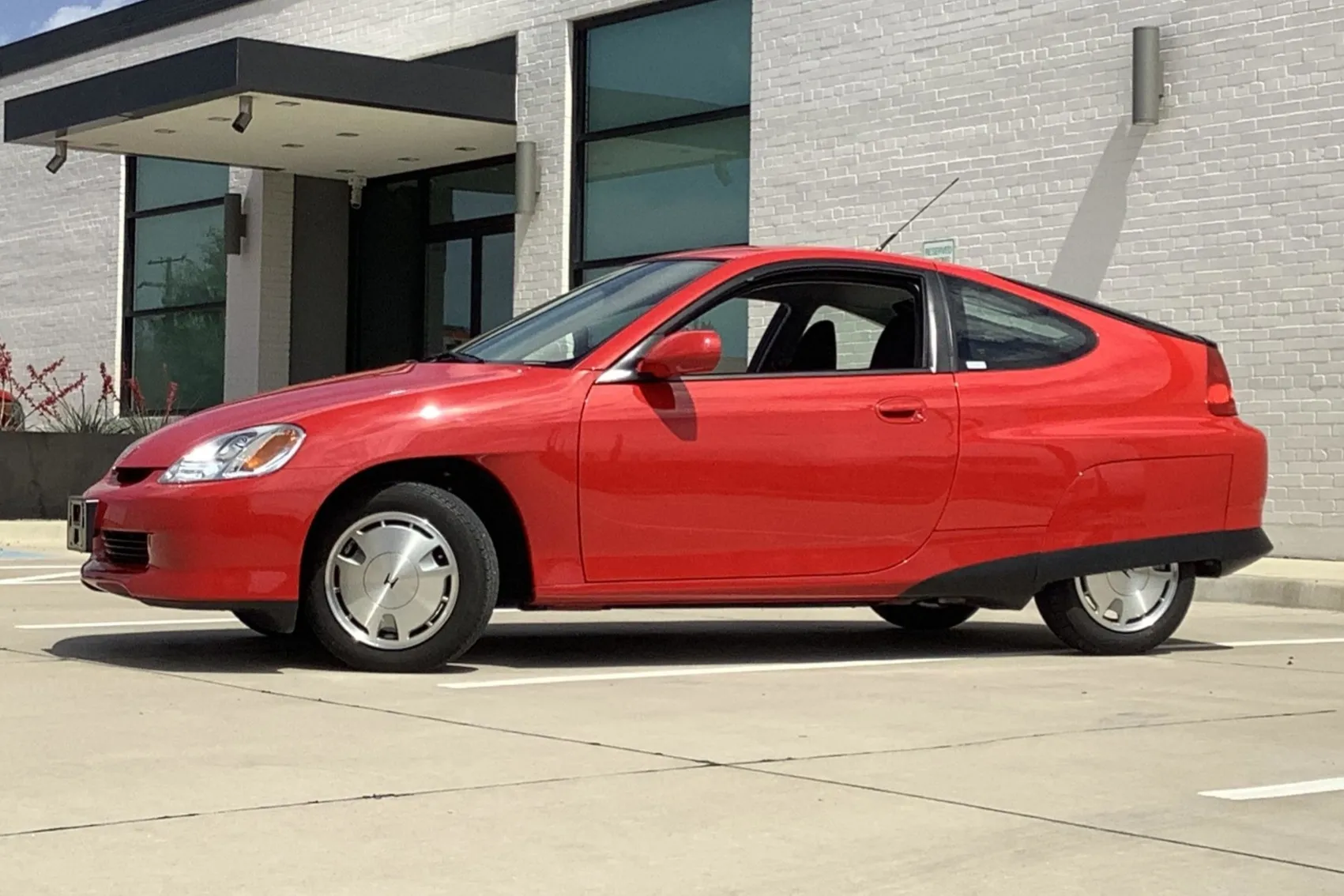
5. Honda Insight (First Generation, 2000-2006)
The first-generation Honda Insight was one of the first modern hybrid vehicles sold in the U.S. market and showcased Honda’s early innovation in hybrid technology.
However, being a pioneering vehicle, it came with its share of growing pains. The Insight’s hybrid system, while groundbreaking, was relatively rudimentary compared to later models.
The nickel-metal hydride battery pack was especially prone to early failure, often requiring replacement well before the vehicle reached 150,000 miles. Battery replacement was not only costly but also complicated by the limited availability of original equipment manufacturer (OEM) batteries, forcing many owners to seek aftermarket solutions with varied reliability.
The Insight’s lightweight aluminum body, while excellent for fuel efficiency, was more vulnerable to wear and damage than traditional steel-bodied vehicles. Many owners reported corrosion issues, particularly in regions with harsh winters or high humidity.
This accelerated rust development compromised both structural integrity and aesthetics, detracting from the car’s longevity. Additionally, the early hybrid components, such as the regenerative braking system, sometimes exhibited glitches that affected braking feel and performance. Such issues could lead to increased brake wear and occasional safety concerns, requiring more frequent inspections and repairs.
Electronics in the first-gen Insight were also relatively primitive and sometimes unreliable. Owners often faced issues with dashboard warning lights, sensor failures, and diagnostic errors that could be difficult to interpret and fix without specialized tools.
The car’s interior, while functional, did not age well, with seats and trim showing rapid wear and fading, which diminished owner satisfaction. Although the Insight was a landmark vehicle in hybrid history, it was certainly not one of Honda’s trouble-free hybrids, serving more as a valuable learning experience for the company than as a long-term, low-maintenance daily driver.
Also Read: Top 5 Cars That Dont Require Premium Gas and 5 That Cant Run Without It
Honda’s journey into hybrid technology has been marked by both significant achievements and notable challenges. The brand’s portfolio of hybrid vehicles showcases a spectrum of reliability, reflecting the rapid evolution of hybrid systems and the learning curve inherent to new automotive technologies.
On one end of the spectrum, models like the second-generation Insight, the Accord Hybrid, and the CR-V Hybrid stand out as shining examples of trouble-free ownership.
These vehicles benefit from Honda’s refined engineering, robust battery management, and mechanical simplicity that collectively contribute to long-lasting durability. Owners of these hybrids frequently enjoy years of efficient, low-maintenance driving, with relatively few unexpected repairs and steady fuel savings.
On the other hand, early or less refined models such as the first-generation Civic Hybrid, the sporty CR-Z, and the first-generation Accord Hybrid illustrate some of the growing pains Honda faced when integrating hybrid systems. These vehicles tend to suffer from premature battery degradation, transmission quirks, and electronic gremlins that can significantly increase ownership costs and inconvenience.
The complexity of hybrid powertrains, especially in the early days, sometimes outpaced Honda’s ability to ensure flawless reliability, leaving some models vulnerable to reliability issues that tarnished their reputations.
The early CR-V Hybrid and first-generation Insight further underscore the importance of thermal management and build quality, showing how minor engineering compromises can translate into major real-world problems.
For potential hybrid buyers, the key takeaway is that not all Honda hybrids are equally reliable, and a model’s generation, hybrid system complexity, and maintenance history should be carefully considered. Advances in battery technology, hybrid control software, and thermal management have markedly improved the dependability of more recent Honda hybrids.
As such, newer models tend to be safer bets for those seeking trouble-free operation. At the same time, older or niche models with known issues should be approached with caution, ideally accompanied by thorough inspections and a clear understanding of potential repair costs.
Ultimately, Honda’s hybrid lineup offers a compelling mix of options that can suit different needs and budgets, provided buyers are informed about which models deliver on Honda’s promise of reliability and which require more vigilance.
As hybrid technology continues to mature, Honda is likely to refine and improve its offerings further, reducing the gap between innovation and reliability. Until then, prospective owners will benefit greatly from understanding the strengths and weaknesses within Honda’s hybrid history to make smarter, more confident decisions in their pursuit of greener, more efficient driving.

